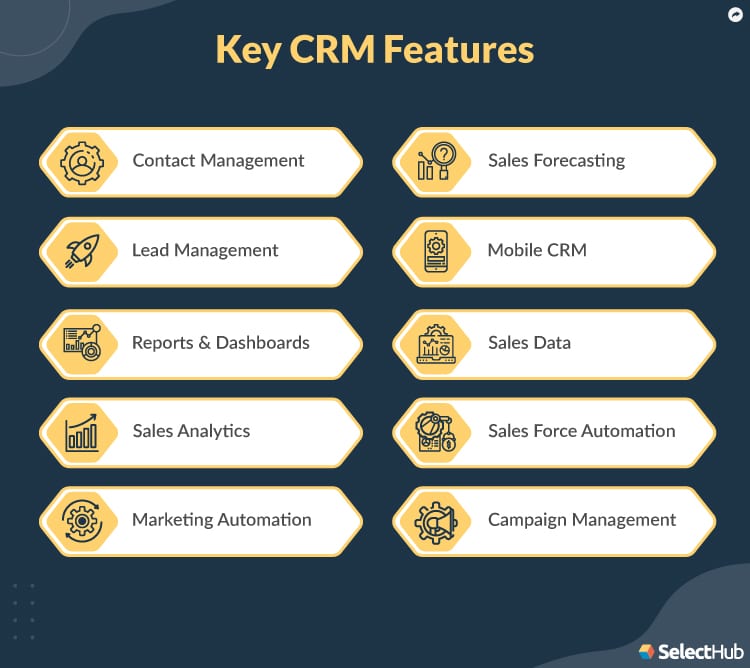
Over 50% of website traffic comes from organic search engine results, so your content marketing strategy is vital for your next project.
As you create a strategy, you might consider creating a list of your product’s tools. Doing things this way makes a lot of sense because it provides information on what the product does, and from there, your target audience can determine if it will help them reach their goals.
However, tool lists often fail to provide your customers with relevant information because the ultimate decision hinges on each tool’s features, not the tools themselves.
By shifting the focus from exhaustive tool lists to detailed feature lists, you can simplify the decision-making process and give customers more specific information on your product.
This approach saves your customers time because they won’t have to research the product’s integrated tools to learn how they work. It also ensures you invest in the right content to propel your business forward.
This guide examines why embracing feature lists for marketers over traditional tool lists can revolutionize your marketing strategy and lead to more successful outcomes.
Quick Takeaways
- Tool lists are popular with marketers.
- These lists might not provide the information the customer is actually seeking.
- Feature lists help cut through the noise and provide customers with beneficial data.
- The result is more informed customers making confident decisions for their business.
The Problems with Tool Lists
Overwhelming Choices
Imagine you’re a beginner marketer, and you’ve just come across a list titled “Top 50 Marketing Tools You Must Have.” At first glance, this might seem like a treasure trove of resources, but the sheer number of options can soon become overwhelming.
Extensive product tool lists are intimidating for your customers in the same way because they present so much data without guidance on where to start or which tools are essential for specific tasks. This abundance can leave your audience paralyzed, unsure of which tools are necessary for their needs.
Information Overload
When faced with too many options, it’s easy to experience information overload. This phenomenon occurs when content bombards the brain with more information than it can process, leading to decision fatigue.
Decision fatigue happens when you become mentally exhausted from making too many choices, resulting in poorer decision-making quality. Without a clear understanding of what each tool does and how it fits into their business, your customers may feel lost and directionless.
The potential for confusion is high, and instead of making informed choices, customers might end up buying the wrong product or not buying anything at all, causing you to miss out on a sale.
Lack of Context
Another significant issue with tool lists is the lack of context. Marketing content often lists tools without explaining their practical applications or how they integrate into a broader business strategy.
For instance, you might put together a list with several security tools your product integrates, but without context, a customer might not understand where these tools fit into their business.
Knowing why and when to use a tool can significantly enhance its effectiveness. Without this context, decision-makers have to guess, potentially investing time and resources into tools that don’t align with their needs.
About 20% of customers will leave a brand after a single negative experience, even if they are loyal to that company, so you don’t want to lead them on with the wrong information.
Overall, feature lists for marketers help cut through the noise, providing clarity and direction in a landscape with endless options.
Benefits of Feature Lists For Marketers
Focuses on Needs
Feature lists are all about zeroing in on what customers truly need to accomplish their goals. Instead of sifting through a long list of tools, this type of content is valuable because it identifies specific features of the product, making it easier to understand its use.

A feature list can vary depending on the type of product. Example include:
Lead generation:
- Landing page builders
- Email automation
- CRM integration
SEO:
- Keyword research tools
- Backlink analysis
- Site audit capabilities
Social media management:
- Post scheduling
- Analytics
- Engagement tracking
Rather than listing tools by name or explaining technical details, organizing the content this way offers a quick overview of what the tools will accomplish for the customer. The result is a happy customer who doesn’t have to dig for this information.
Simplifies Decision Making
When you use a feature list, you narrow down the choices and streamline the decision-making process. The reader doesn’t have to wade through a sea of tools to find information but can quickly find a product offering the right features.
Presenting the information this way reduces decision fatigue, enabling your customers to confidently compare tools based on how well they meet their specific needs rather than getting lost in an endless comparison of all available options.
Better Understanding of Functionality
Feature lists for marketers also enhance customers’ understanding of their needs before selecting a tool. By focusing on features, they learn more about what each tool does and how it can benefit their business.
This knowledge is critical for making informed decisions. For instance, understanding how email automation can streamline the lead nurturing process or how keyword research tools improve SEO strategy helps customers see the value of these features in action.
This deeper understanding ensures that when customers choose a tool, they select one that truly aligns with their goals and can effectively support their strategy.
Tips for Creating Feature Lists
Some planning will be necessary before creating a feature list because you want to ensure you give customers the exact information they seek.
Start with Clear Objectives
Begin by setting clear marketing objectives, knowing what you want to achieve, and identifying the ideal customers you want to reach. Understanding your audience directs your feature list and ensures you focus on your customers’ desired features.
Prioritize Essential Features
Once your objectives are clear, prioritize the features most customers want in a product. Focusing on these must-have features helps you avoid unnecessary complexities and convey the most relevant information to your customers.
Regularly Update Your List
Your marketing needs and customer expectations could evolve, so it’s crucial to continually update your feature list or create new content focusing on additional features. Regularly review, adjust, or adapt your feature lists to align with what your customers want from your product.
You’ll also want to monitor the traffic your content is getting. If you aren’t getting enough traffic, you’ll need to adjust your strategy.

These tips help you create a focused, effective feature list that enhances your marketing efforts and ensures you reach the right customers.
Making the Switch to Feature Lists
Your content marketing strategy is vital to your company, and delivering customers the information they seek is crucial. Adjusting your content to give your readers the “how” instead of the “what” provides more relevant details to help them decide whether your product offers the right fit.
Your feature lists should engage with your target audience, and Marketing Insider Group can get you there with our Content Builder Services. Contact us for more information or a free consultation.


0 Commentaires